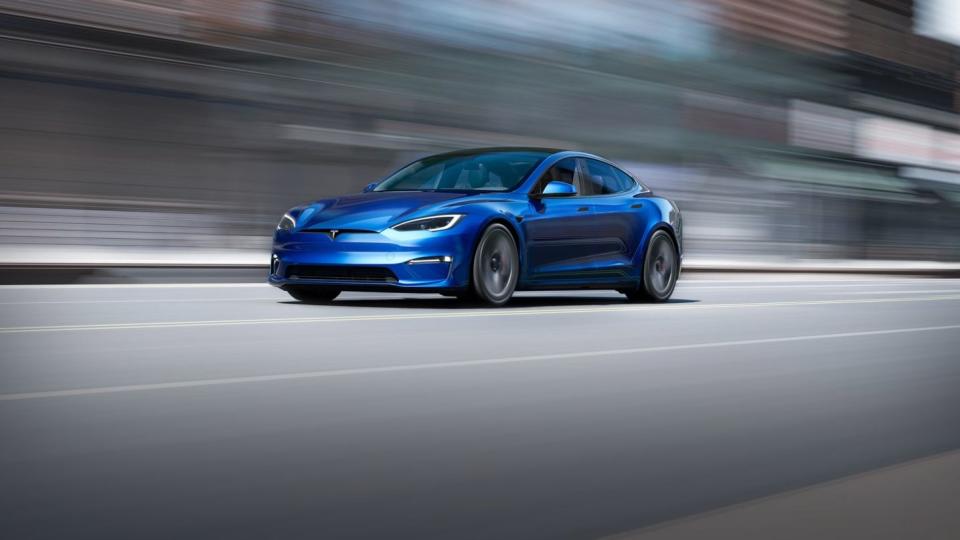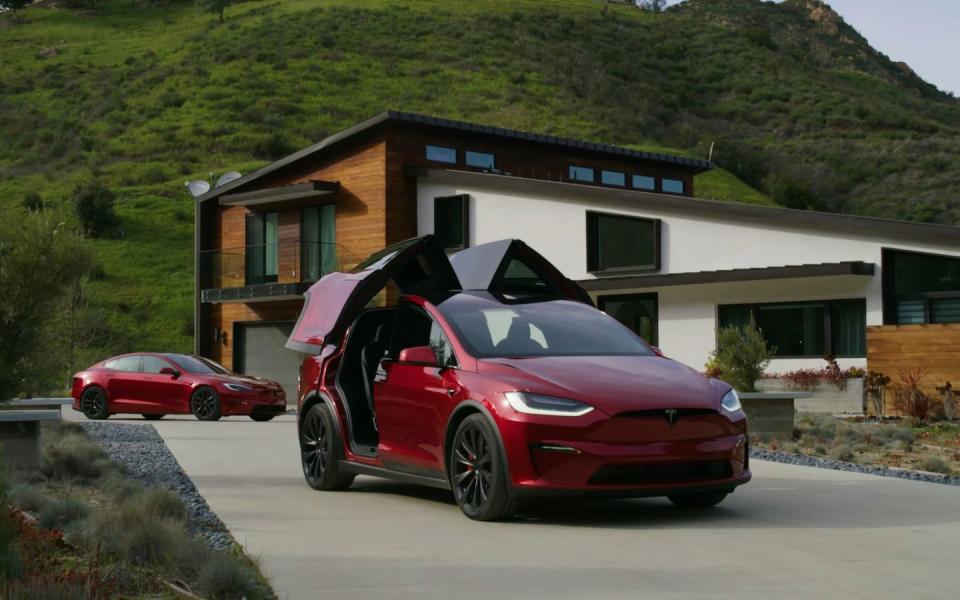Tesla Uses an Interesting Trick to Launch Cheaper Models

Tesla is introducing Standard Range Model S and Model X trims with price tags lowered by $10,000, offering—as the name suggests—shorter ranges than existing versions.
Tesla has locked some of the battery capacity via software, so the two models actually carry the same battery packs as the longer-ranged models.
The Model S and Model X now account for a small percentage of Tesla sales, but plans for their complete redesigns have not been detailed by Tesla.
It has been a while since the Tesla Model S and Model X were even close to affordable—or unique in their segments, for that matter, with the former now over a decade old. But the EV maker has continued to update the sedan and SUV, most recently with yoke steering and other interior and exterior tweaks.
This week Tesla has quietly introduced two versions of the long-running duo that promise to be the most affordable in their respective trim lineups. (At least for a while, price changes being inevitable at Tesla.)
One of these is now called the Model S Standard Range, featuring a dual-motor, all-wheel-drive layout and offering a range of 320 miles. But it is equipped with the same battery as the Long Range version that offers 375 miles.
A Trick of Software
How can this be?
Tesla has locked some of the battery's capacity via software, allowing it to offer a less expensive model without introducing any new hardware. This version carries a price tag of $79,880, which is $10,000 south of the Long Range Dual Motor version.
Likewise, Tesla has "created" a Standard Range version of the Model X, offering a range of 269 miles via a software-limited battery, but is priced $10,000 below the regular Model X with a range of 348 miles. This (relatively) more affordable version of the Model X carries a price tag of $89,880.

The tactic of locking some of the battery capacity via software is not anything new for the EV maker, which has offered lower-priced versions like this before in several markets. The move allows it to roll out cheaper versions of its models in response to new competition in various markets without tweaking all that much.
This also allows the automaker to offer to unlock some of that battery capacity at a later date for a fee, thus allowing it to sell an "upgrade" later.
In this case, Tesla hasn't officially said that it will offer the option of unlocking more range in these two models.
Collectively, the Model S and Model X now account for a tiny fraction of Tesla's output, and are far more expensive than the more popular Model 3 and Model Y. The price drops may not suddenly propel many prospective buyers who weren't already considering a Model S or Model X, as both are still quite expensive, but it could nudge some shoppers away from the competition that seems to be growing with each passing month.
Over the Hill?
From a wider perspective, the Model S and the Model X are now two of the oldest offerings in their segments, and at some point could require complete redesigns instead of incremental upgrades with software-locked features or new types of steering wheels.
Tesla hasn't detailed just when we might see an entirely new Model S, and hasn't really signaled that the sedan needs a complete redesign for that matter. Likewise, we haven't seen much evidence of repeat Tesla buyers clamoring for entirely new platforms, despite the age of the two vehicles.
It remains to be seen how long Tesla can keep the existing Model S and Model X on the market without complete redesigns, given the pace of platform shelf lives of its competitors.
Will consumer accept tactics such as software-locked batteries in vehicles with lower price tags in the long run, or will this method of creating less expensive models create a backlash in the marketplace? Let us know what you think.

 Yahoo Autos
Yahoo Autos 